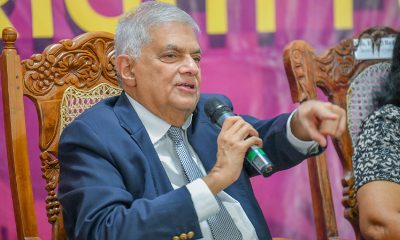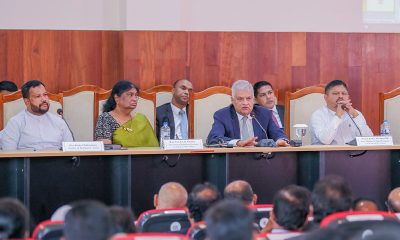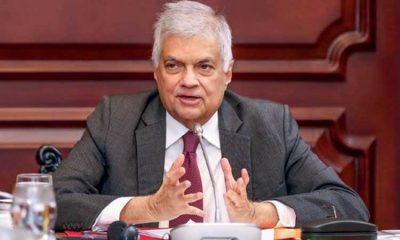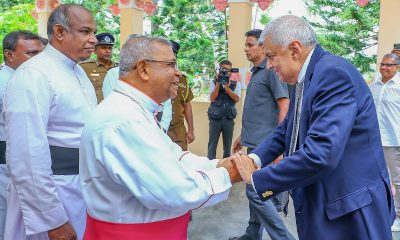Features
Neutral foreign policy in practice

by Neville Ladduwahetty
President Ranil Wickremesinghe has repeatedly declared that Sri Lanka’s foreign policy is neutral. However, he and his government, meaning the Foreign Ministry in particular, has not elaborated on how a policy of neutrality works in practice. Notwithstanding this lacuna, the policy of neutrality as the foreign policy was first adopted by former President Gotabaya Rajapaksa during his acceptance speech, perhaps, influenced by the six foreign policy options presented in an article titled “Independence: Its meaning and a direction for the future” (Neville Ladduwahetty, The Island, 14 Feb., 2019). Despite the fact that the policy of neutrality has been accepted by two Presidents and the current Prime Minister Dinesh Gunawardena, on grounds that it legitimately permits Sri Lanka to be free from getting entangled in major power rivalries, members of this government still publicly announce their preference for a Non-Aligned foreign policy.
LACK of CONSISTENCY
The lack of consistency has manifested itself in several instances. For instance, despite the Policy of Neutrality, an assurance given by the President to India’s Prime Minister was that Sri Lanka would factor in the security concerns of India in the implementation of the Policy of Neutrality. In the background of such assurances India did not hesitate to raise objections when a Chinese Research Ship, with surveillance capabilities, sought permission to dock at a Sri Lankan Port. However, because India could not present sufficiently valid grounds for its objections, Sri Lanka stood by its decision to permit the Chinese ship to enter Sri Lankan waters; thus living by its commitment to the Policy of Neutrality.
It is reported that the Chinese Embassy is again seeking permission for Shi Yan 6 to enter Sri Lanka’s Exclusive Economic Zone from October to November 2023. It is reported that Sri Lanka is considering this request. The practice of considering such requests on a case by case basis should stop. After the previous experience, the Defence Ministry, together with the Foreign Ministry, should have developed a Standard Operating Procedure in keeping with the Policy of Neutrality to handle requests relating to scientific studies or any other capabilities that could be a threat to the inviolability of Sri Lanka’s territory as a declared Neutral State and circulated it among the Foreign Missions. Such an exercise would convey how the Policy of Neutrality operates in practice.
On the other hand, Sri Lanka failed to live by its Policy of Neutrality when it conceded to the objections raised by India for the construction of a Solar Power Plant on the Island of Delft on grounds that it was a threat to the security of India without any elaboration, despite it being a contract offered by the Asian Development Bank after calling for international tenders. Sri Lanka did not question the grounds for the objections. Instead, it caved in without question, thus compromising its Policy of Neutrality.
The most recent manifestation of the lack of consistency was when the President signed 5 MOUs with India, all of which was to advance connectivity with Sri Lanka to the point of integration with India. The Policy of Neutrality flies in the face of such undiluted integration with one country at the expense of its relations with other countries, thus making a mockery of the credibility of Sri Lanka, its leaders and the dignity of its Peoples.
The perception that the current economic crisis justifies Sri Lanka accepting grants and lines of credit from India or from any other country should be seen as an opportunity by any country to exploit Sri Lanka’s current economic weakness to further its own interests by controlling the destiny of Sri Lanka. This after all, is not looking at a gift horse in the mouth. It is nothing but a Trojan horse that demonstrates how unadulterated realpolitik works. The reality is that India took the initiative to lend a hand to Sri Lanka during its hour of need in order to prevent any other State from lending a hand to Sri Lanka that is in its own backyard.
PRINCIPLES and DUTIES of a
NEUTRAL STATE
Based on an ICRC Publication on Neutrality, June 2022.
The Introduction of this publication states: “The sources of the international law of neutrality are customary international law and, for certain questions, international treaties, in particular the Paris Declaration of 1856, the 1907 Hague Convention No. V respecting the Rights and Duties of Neutral Powers and Persons in Case of War on Land, the 1907 Hague Convention No. XIII concerning the Rights and Duties of Neutral Powers in Naval War, the four 1949 Geneva Conventions and Additional Protocol I of 1977.
”1. PRINCIPLES AND DEFINITIONS
THE PRINCIPLE OF INVIOLABILITY
The territory of a neutral State is inviolable. It is prohibited to commit any act of hostility whatsoever on such territory. Neutrality describes the formal position taken by a State which is not participating in an armed conflict or which does not want to become involved. This status entails specific rights and duties. On the one hand, the neutral State has the right to stand apart from and not be adversely affected by the conflict. On the other hand, it has a duty of non-participation and impartiality.
Neutral space comprises the national territory of the neutral State, its territorial waters and its national air space. Neutral persons are nationals of neutral States. They lose their neutral status if they commit hostile acts against a belligerent. Individuals may join the armed forces of a belligerent party, but then they also lose their neutral status. They still have all the guarantees of protection that a member of those forces would enjoy, and therefore are entitled to POW status if they are subsequently captured. If, however, they can be defined as mercenaries, whom we covered in an earlier lesson, they do not have the right to be considered as combatants or POWs.
As long as their home State maintains normal diplomatic relations with the belligerent State they are living in or visiting, neutral persons are to be treated in the same way as they would be in peacetime. They remain under diplomatic protection. If there are no such diplomatic relations, neutral persons are entitled to be treated as protected persons under the Fourth Geneva Convention. It makes no difference to their status if they are civilians or members of the armed forces of the neutral State to which they belong”.
“3. THE DUTIES OF NEUTRAL STATES (Ibid)
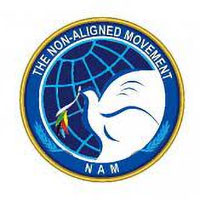 Policy and instructions – the neutral State must also take measures to ensure and enforce the protection of its neutrality in the neutral space for which it is responsible in relation to the belligerent parties and, in particular, their armed forces. To obtain neutral status, the State does not have to make a formal declaration, nor do other States or parties formally have to recognize such status. A formal declaration will only have the effect of making Neutral status better known.
Policy and instructions – the neutral State must also take measures to ensure and enforce the protection of its neutrality in the neutral space for which it is responsible in relation to the belligerent parties and, in particular, their armed forces. To obtain neutral status, the State does not have to make a formal declaration, nor do other States or parties formally have to recognize such status. A formal declaration will only have the effect of making Neutral status better known.
The armed forces of the neutral State also require clear instructions on how they are to operate in relation to the defence of their territory and in dealing with incursions. For isolated and accidental violations of neutral space, the instructions might include the need to issue warnings or give a demonstration of force. For increasingly numerous and serious violations, a general warning might be called for and the use of force stepped up.
Particular obligations – the neutral State must ensure respect for its neutrality, if necessary, using force to repel any violation of its territory. Violations include failure to respect the prohibitions placed on belligerent parties with regard to certain activities in neutral territory, described above. The fact that a neutral State uses force to repel attempts to violate its neutrality cannot be regarded as a hostile act. If the neutral State defends its neutrality, it must however respect the limits which international law imposes on the use of force. The neutral State must treat the opposing belligerent States impartially.
This obligation does not mean that a State is bound to treat the belligerents in exactly the same way. It entails a prohibition on discrimination.
It forbids only differential treatment of the belligerents which in view of the specific problem of armed conflict is not justified. Therefore, a neutral State is not obliged to eliminate differences in commercial relations between itself and each of the parties to the conflict at the time of the outbreak of the armed conflict. It is entitled to continue existing commercial relations. A change in these commercial relationships could, however, constitute taking sides inconsistent with the status of neutrality.
A neutral state must never assist a party to the armed conflict, in particular it must not supply warships, ammunition or other war materials directly or indirectly to a belligerent power, but otherwise its trade with the belligerent States remains unaffected”.
The material presented above embodies internationally recognized practices that should be adopted by a neutral state.
Therefore, as a neutral state it is appropriate that issues relating to the armed conflict that ceased in May 2009 are also addressed under provisions of international humanitarian law applicable to non-international armed conflict as codified in additional protocol ii of 1977.
THE ROLE of DOMESTIC POLICY in
FOREIGN POLICY
The general understanding is that the focus of Foreign Policy is how a State maintains friendly relations and cooperation with other States in the pursuit of its national interests. However, the fact that origins of national interests are influenced and often driven by domestic interests is not given the attention it deserves. For instance, a key national interest is food security. Therefore, the domestic policy should be how to implement agricultural policies that ensure food security in a manner that assures access to food at affordable prices.
However, food security is possible only if there is sufficient water. This is where irrigation becomes a vital component in a domestic policy of food security. These issues were presented in the article referred to earlier that advocated Neutrality as the appropriate Foreign Policy for Sri Lanka in the context of geopolitical rivalries titled “Independence: Its meaning and a direction for the future”. The relevant section with appropriate updates from this article is presented below:
“Since Sri Lanka possesses skills, technical knowhow and materials locally, except for a small component of imported items to design and build infrastructure projects relating to water supply, highways and high-rise structures, and the only shortcoming is finance, the government should facilitate financing arrangements through local banks, through Treasury Bills or through specific taxes instead of taking bilateral loans from any of the major powers blocks. If Sri Lanka is compelled to take loans to implement infrastructure projects to further its economy, at least Sri Lanka should insist whenever possible that the design and construction of such projects should, as a policy, be undertaken by Sri Lanka. However, there are projects beyond the capability of local talent in fields such as power generation and value addition of raw materials that are currently being exported. One way of attracting Foreign Direct Investment is for the government to encourage and facilitate the emerging class of astute entrepreneurs to engage with the private sector in countries that have the know-how to implement those projects that are beyond the capabilities of local talent”.
“In the meantime, the government should focus on food security by giving every possible incentive locally, not only because tried and tested skills and knowhow are available locally through centuries of experience but also because it is the fastest and most effective way to improve the livelihood and wellbeing of the bulk of the nation. Such traditional agricultural practices should be coupled with up to date technologies relating to transport, packaging and processing of agricultural products together with marketing the end products for local consumption as well as export’.
“Since water is the most vital input for agriculture the government should undertake a programme to restore the ancient tanks that dot the landscape of Sri Lanka as part of food security, because the consequence of climate change is the certainty that it is not possible to predict when and where it would rain. As a key feature of such a programme, the upper elevations that form the catchment area of the major rivers in Sri Lanka should be declared a natural reserve under the control of the central government and reforested to harvest precipitation from either of the monsoons”.
“A development strategy that should run parallel with food security should be the development of a whole range of organic agricultural products including spices outside the range related to food security e.g. horticulture, flowers, ornamental plants and foliage along with spices and herbal medicinal plants not only for local consumption but also specifically targeted for export. A few pioneering entrepreneurs have already embarked on this field of activity but it is only a serious and concerted thrust undertaken by the government as an integral part of a National Economic Policy to develop agriculture and agriculture-based products that could take this field of economic activity far beyond what it is today. Each of the 24 Districts should be declared the epicenter of such agricultural endeavours based on targets set by the Center. Such a strategy would contribute directly to the human development of a hitherto neglected section of the rural population with the minimum of external input”.
It is evident from the foregoing that a whole range of Economic Policies could emerge based on the Domestic Policies adopted. These Domestic Policies would contribute immeasurably to Sri Lanka being free of the dependence on imported agricultural products. For instance, the declaration by the Minister of Agriculture that Sri Lanka imports nearly 2 Billion Dollars of fruits and vegetables is a shameful admission of a failed and flawed Domestic Policies. In such a background to talk about competitive export oriented Economic Policies is to reverse priorities.
An issue that is of vital importance to a State that practices Neutrality as its stated Foreign Policy is that it cannot afford to entertain unsolicited infrastructure projects such as the Light Rail Project from Japan and the offshore Nuclear Power Plants from Russia. Since the actions of a Neutral State must be neutral and therefore act free of any preferences or biases in the implementation of its Economic Policies or any commercial activities, its engagement with other States should be transparent and open. Furthermore, the initiative to implement such projects should be formulated by the Neutral State as part of its Domestic Policy.
CONCLUSION
Now that the President and Prime Minister of Sri Lanka have declared that Sri Lanka’s foreign policy is neutral, the material presented herein gives the internationally accepted norms by which a Neutral State should conduct its Foreign Relations and in turn how other States should respect its Policy of Neutrality. One vital aspect of such a norm is the respect of other States for the inviolability of the territory of the Neutral State and its integrity.
The Policy of Neutrality is the best defence Sri Lanka has to deter global powers from attempting to get control of Sri Lanka because of its strategic location on grounds internationally recognized norms of conduct applicable to a Neutral State. The extent to which Sri Lanka succeeds in retaining its Freedoms and Independence amidst such challenges depends on how Sri Lanka conducts its Foreign Relations as a Neutral State.
The most recent concern to the Policy of Neutrality is the request by the Chinese Research Ship to enter Sri Lankan waters to carry out research studies in collaboration with National Aquatic Resources Research and Development Agency (NARA); a practice they have been engaged in since 2017 after signing an MOU. The MOU has lapsed and is due for renewal. The recommendation is that if such concerns are to avoided the Defence Ministry together with the Foreign Ministry should develop a Standard Operating Procedure relating to the entry of any sea going vessel to enter Sri Lankan waters and circulate it among the Foreign Missions so that they are forewarned about the internationally recognized rights of a Neutral State.
The other aspect addressed is the symbiotic relationship that exists between Domestic Policies and Foreign Policies. In this regard the recommendation advocated is to seriously and strenuously focus on developing internal strengths particularly in the fields of agriculture to ensure food security and in the field of horticulture for export. In short, the Domestic Policies should focus on reducing imports in all fields that Sri Lanka can free itself of external dependence. The fact that Sri Lanka imports fruits and vegetables is a shame that Sri Lanka can do without.
As a Neutral State, Sri Lanka should conduct its Foreign Relations in a manner that underscores its core civilizational value of self-reliance to meet future challenges.
Features
RuGoesWild: Taking science into the wild — and into the hearts of Sri Lankans

At a time when misinformation spreads so easily—especially online—there’s a need for scientists to step in and bring accurate, evidence-based knowledge to the public. This is exactly what Dr. Ruchira Somaweera is doing with RuGoesWild, a YouTube channel that brings the world of field biology to Sri Lankan audiences in Sinhala.
“One of my biggest motivations is to inspire the next generation,” says Dr. Somaweera. “I want young Sri Lankans to not only appreciate the amazing biodiversity we have here, but also to learn about how species are studied, protected, and understood in other parts of the world. By showing what’s happening elsewhere—from research in remote caves to marine conservation projects—I hope to broaden horizons and spark curiosity.”
Unlike many travel and wildlife channels that prioritise entertainment, RuGoesWild focuses on real science. “What sets RuGoesWild apart is its focus on wildlife field research, not tourism or sensationalised adventures,” he explains. “While many travel channels showcase nature in other parts of the world, few dig into the science behind it—and almost none do so in Sinhala. That’s the niche I aim to fill.”
Excerpts of the Interview
Q: Was there a specific moment or discovery in the field that deeply impacted you?
“There have been countless unforgettable moments in my 20-year career—catching my first King cobra, discovering deep-diving sea snakes, and many more,” Dr. Somaweera reflects. “But the most special moment was publishing a scientific paper with my 10-year-old son Rehan, making him one of the youngest authors of an international peer-reviewed paper. We discovered a unique interaction between octopi and some fish called ‘nuclear-forager following’. As both a dad and a scientist, that was an incredibly meaningful achievement.”

Saltwater crocodiles in Sundarbans in Bangladesh, the world’s largest mangrove
Q: Field biology often means long hours in challenging environments. What motivates you to keep going?
“Absolutely—field biology can be physically exhausting, mentally draining, and often dangerous,” he admits. “I’ve spent weeks working in some of the most remote parts of Australia where you can only access through a helicopter, and in the humid jungles of Borneo where insects are insane. But despite all that, what keeps me going is a deep sense of wonder and purpose. Some of the most rewarding moments come when you least expect them—a rare animal sighting, a new behavioural observation, or even just watching the sun rise over a pristine habitat.”
Q: How do you balance scientific rigour with making your work engaging and understandable?
“That balance is something I’m constantly navigating,” he says. “As a scientist, I’m trained to be precise and data-driven. But if we want the public to care about science, we have to make it accessible and relatable. I focus on the ‘why’ and ‘wow’—why something matters, and what makes it fascinating. Whether it’s a snake that glides between trees, a turtle that breathes through its backside, or a sea snake that hunts with a grouper, I try to bring out the quirky, mind-blowing parts that spark curiosity.”
Q: What are the biggest misconceptions about reptiles or field biology in Sri Lanka?
“One of the biggest misconceptions is that most reptiles—especially snakes—are dangerous and aggressive,” Dr. Somaweera explains. “In reality, the vast majority of snakes are non-venomous, and even the venomous ones won’t bite unless they feel threatened. Sadly, fear and myth often lead to unnecessary killing. With RuGoesWild, one of my goals is to change these perceptions—to show that reptiles are not monsters, but marvels of evolution.”
Q: What are the most pressing conservation issues in Sri Lanka today?
“Habitat loss is huge,” he emphasizes. “Natural areas are being cleared for housing, farming, and industry, which displaces wildlife. As people and animals get pushed into the same spaces, clashes happen—especially with elephants and monkeys. Pollution, overfishing, and invasive species also contribute to biodiversity loss.”

Manta Rays
Q: What role do local communities play in conservation, and how can scientists better collaborate with them?
“Local communities are absolutely vital,” he stresses. “They’re often the first to notice changes, and they carry traditional knowledge. Conservation only works when people feel involved and benefit from it. We need to move beyond lectures and surveys to real partnerships—sharing findings, involving locals in fieldwork, and even ensuring conservation makes economic sense to them through things like eco-tourism.”
Q: What’s missing in the way biology is taught in Sri Lanka?
“It’s still very exam-focused,” Dr. Somaweera says. “Students are taught to memorize facts rather than explore how the natural world works. We need to shift to real-world engagement. Imagine a student in Anuradhapura learning about ecosystems by observing a tank or a garden lizard, not just reading a diagram.”
Q: How important is it to communicate science in local languages?
“Hugely important,” he says. “Science in Sri Lanka often happens in English, which leaves many people out. But when I speak in Sinhala—whether in schools, villages, or online—the response is amazing. People connect, ask questions, and share their own observations. That’s why RuGoesWild is in Sinhala—it’s about making science belong to everyone.”

‘Crocodile work’ in northern Australia.
Q: What advice would you give to young Sri Lankans interested in field biology?
“Start now!” he urges. “You don’t need a degree to start observing nature. Volunteer, write, connect with mentors. And once you do pursue science professionally, remember that communication matters—get your work out there, build networks, and stay curious. Passion is what will carry you through the challenges.”
Q: Do you think YouTube and social media can shape public perception—or even influence policy?
“Absolutely,” he says. “These platforms give scientists a direct line to the public. When enough people care—about elephants, snakes, forests—that awareness builds momentum. Policymakers listen when the public demands change. Social media isn’t just outreach—it’s advocacy.”
by Ifham Nizam
Features
Benjy’s vision materalises … into Inner Vision

 Bassist Benjy Ranabahu is overjoyed as his version of having his own band (for the second time) is gradually taking shape.
Bassist Benjy Ranabahu is overjoyed as his version of having his own band (for the second time) is gradually taking shape.
When asked as to how the name Inner Vision cropped up, Benjy said that they were thinking of various names, and suggestions were made.
“Since we have a kind of a vision for music lovers, we decided to go with Inner Vision, and I guarantee that Inner Vision is going to be a band with a difference,” said Benjy.
In fact, he has already got a lineup, comprising musicians with years of experience in the music scene.
Benjy says he has now only to finalise the keyboardist, continue rehearsing, get their Inner Vision act together, and then boom into action.
“Various names have been suggested, where the keyboard section is concerned, and very soon we will pick the right guy to make our vision a reality.”
Inner Vision will line-up as follows…
Anton Fernando

Benjy Ranabahu:
Ready to give music
lovers a new vision
(Lead guitar/vocals): Having performed with several bands in the past, including The Gypsies, he has many years of experience and has also done the needful in Japan, Singapore, Dubai, the Maldives, Zambia, Korea, New Zealand, and the Middle East.
Lelum Ratnayake
(Drums/vocals): The son of the legendary Victor Ratnayake, Lelum has toured Italy, Norway, Japan, Australia, Zambia, Kuwait and Oman as a drummer and percussionist.
Viraj Cooray
(Guitar/vocals): Another musician with years of experience, having performed with several of our leading outfits. He says he is a musician with a boundless passion for creating unforgettable experiences, through music.
Nish Peiris

Nish Peiris: Extremely talented
(Female vocals): She began taking singing, seriously, nearly five years ago, when her mother, having heard her sing occasionally at home and loved her voice, got her involved in classes with Ayesha Sinhawansa. Her mom also made her join the Angel Chorus. “I had no idea I could sing until I joined Angle Chorus, which was the initial step in my career before I followed my passion.” Nish then joined Soul Sounds Academy, guided by Soundarie David. She is currently doing a degree in fashion marketing.
And … with Benjy Ranabahu at the helm, playing bass, Inner Vision is set to light up the entertainment scene – end May-early June, 2025.
Features
Can Sri Lanka’s premature deindustrialisation be reversed?

 As politicians and economists continue to proclaim that the Sri Lankan economy has achieved ‘stability’ since the 2022 economic crisis, the country’s manufacturing sector seems to have not got the memo.
As politicians and economists continue to proclaim that the Sri Lankan economy has achieved ‘stability’ since the 2022 economic crisis, the country’s manufacturing sector seems to have not got the memo.
A few salient points need to be made in this context.
First, Sri Lankan manufacturing output has been experiencing a secular stagnation that predates external shocks, such as the pandemic and the Easter Attacks. According to national accounts data from UNIDO, manufacturing output in dollar terms has basically flatlined since 2012. Without a manufacturing engine at its core, it is no surprise that Sri Lanka has seen some of the lowest rates of economic growth during this period. (See graph)
Second, factory capacity utilisation still remains below pre-pandemic levels. Total capacity utilisation stood at 62% in 2024, compared to 81% in 2019. For wearing apparel, the country’s main manufactured export, capacity utilisation was at a meagre 58% in 2024, compared to 83% in 2019. Given the uncertainty Trump’s tariffs have cast on global trade, combined with the diminished consumer sentiment across the Global North, it is hard to imagine capacity utilisation recovering to pre-pandemic levels in the near future.
Third, new investment in manufacturing has been muted. From 2019 to 2024, only 26% of realised foreign investments in Board of Investment enterprises were in manufacturing. This indicates that foreign capital does not view the country as a desirable location for manufacturing investment. It also reflects a global trend – according to UNCTAD, 81% of new foreign investment projects, between 2020 and 2023, were in services.
Taken together, these features paint an alarming picture of the state of Sri Lankan manufacturing and prospects for longer-term growth.
What makes manufacturing so special?
A critical reader may ask at this point, “So what? Why is manufacturing so special?”
Political economists have long analysed the transformative nature of manufacturing and its unique ability to drive economic growth, generate technical innovation, and provide positive spillovers to other sectors. In the 1960s, Keynesian economist Nicholas Kaldor posited his famous three ‘growth laws, which argued for the ‘special place’ of manufacturing in economic development. More recently, research by UNIDO has found that 64% of growth episodes in the last 50 years were fuelled by the rapid development of the manufacturing sector.
Manufacturing profits provide the basis on which modern services thrive. London and New York could not have emerged as financial centres without the profits generated by industrial firms in Manchester and Detroit, respectively. Complex and high-end services, ranging from banking and insurance to legal advisory to logistics and transport, rely on institutional clients in industrial sectors. Meanwhile, consumer-facing services, such as retail and hospitality, depend on the middle-class wage base that an industrial economy provides.
Similarly, technologies generated in the manufacturing process can have massive impacts on raising the productivity of other sectors, such as agriculture and services. Indeed, in most OECD countries, manufacturing-oriented private firms are the biggest contributors to R&D spending – in the United States, 57% of business enterprise R&D spending is done by manufacturing firms; in China it is 80%.
It has become increasingly clear to both scholars and policymakers that national possession of industrial capacity is needed to retain advantages in higher value-added capabilities, such as design. This is because some of the most critical aspects of innovation are the ‘process innovations’ that are endemic to the production process itself. R&D cannot always be done in the comfort of an isolated lab, and even when it can, there are positive spillovers to having geographic proximity between scientists, skilled workers, and industrialists.
Produce or perish?
Sri Lanka exhibits the telltale signs of ‘premature deindustrialisation’. The term refers to the trend of underdeveloped countries experiencing a decline in manufacturing at levels of income much lower than what was experienced by countries that managed to break into high-income status.
Premature deindustrialisation afflicts a range of middle-income countries, including India, Brazil, and South Africa. It is generally associated with the inability of domestic manufacturing firms to diversify their activities, climb up the value chain, and compete internationally. Major bottlenecks include the lack of patient capital and skilled personnel to technologically upgrade and the difficulties of overcoming the market power of incumbents.
Reversing the trend of premature deindustrialisation requires selective industrial policy. This means direct intervention in the national division of labour in order to divert resources towards strategic sectors with positive spillovers. Good industrial policy requires a carrot-and-stick approach. Strategic manufacturing sectors must be made profitable, but incentives need to be conditional and based on strict performance criteria. Industrial can choose winners, but it has to be willing to let go of losers.
During the era of neoliberal globalisation, the importance of manufacturing was underplayed (or perhaps deliberately hidden). To some extent, knowledge of its importance was lost to policymakers. Karl Marx may have predicted this when, in Volume 2 of Das Kapital, he wrote that “All nations with a capitalist mode of production are, therefore, seized periodically by a feverish attempt to make money without the intervention of the process of production.”
Since the long depression brought about by the 2008 financial crisis, emphasis on manufacturing is making a comeback. This is most evident in the US ruling class’s panic over China’s rapid industrialisation, which has shifted the centre of gravity of the world economy towards Asia and threatened unipolar dominance by the US. In the Sri Lankan context, however, emphasis on manufacturing remains muted, especially among establishment academics and policy advisors who remain fixated on services.
Interestingly, between the Gotabaya Rajapaksa-led SLPP and the Anura Kumara Dissanayake-led NPP, there is continuity in terms of the emphasis on the slogan of a ‘production economy’ (nishpadana arthiakaya in Sinhala). Perhaps more populist than strictly academic, the continued resonance of the slogan reflects a deep-seated societal anxiety about Sri Lanka’s ability to survive as a sovereign entity in a world characterised by rapid technological change and the centralisation of capital.
Nationalist writer Kumaratunga Munidasa once said that “a country that does not innovate will not rise”. Amid the economic crises of the 1970s, former Prime Minister Sirimavo Bandaranaike popularised a pithier exhortation: “produce or perish”. Aside from their economic benefits, manufacturing capabilities are the pride of a nation, as they demonstrate skill and scientific knowledge, a command over nature, and the ability to mobilise and coordinate people towards the construction of modern wonders. In short, it is hard to speak of real sovereignty without modern industry.
(Shiran Illanperuma is a researcher at Tricontinental: Institute for Social Research and a co-Editor of Wenhua Zongheng: A Journal of Contemporary Chinese Thought. He is also a co-Convenor of the Asia Progress Forum, which can be contacted at asiaprogressforum@gmail.com).
By Shiran Illanperuma
-

 Business4 days ago
Business4 days agoDIMO pioneers major fleet expansion with Tata SIGNA Prime Movers for ILM
-

 News3 days ago
News3 days agoFamily discovers rare species thought to be extinct for over a century in home garden
-

 Features6 days ago
Features6 days agoNipping the two leaves and the bud
-

 Features5 days ago
Features5 days agoProf. Lal Tennekoon: An illustrious but utterly unpretentious and much -loved academic
-

 Features6 days ago
Features6 days agoAvurudu celebrations … galore
-

 Foreign News3 days ago
Foreign News3 days agoChina races robots against humans in Beijing half marathon
-

 News6 days ago
News6 days agoCounsel for Pilleyan alleges govt. bid to force confession
-

 Editorial4 days ago
Editorial4 days agoSelective use of PTA



